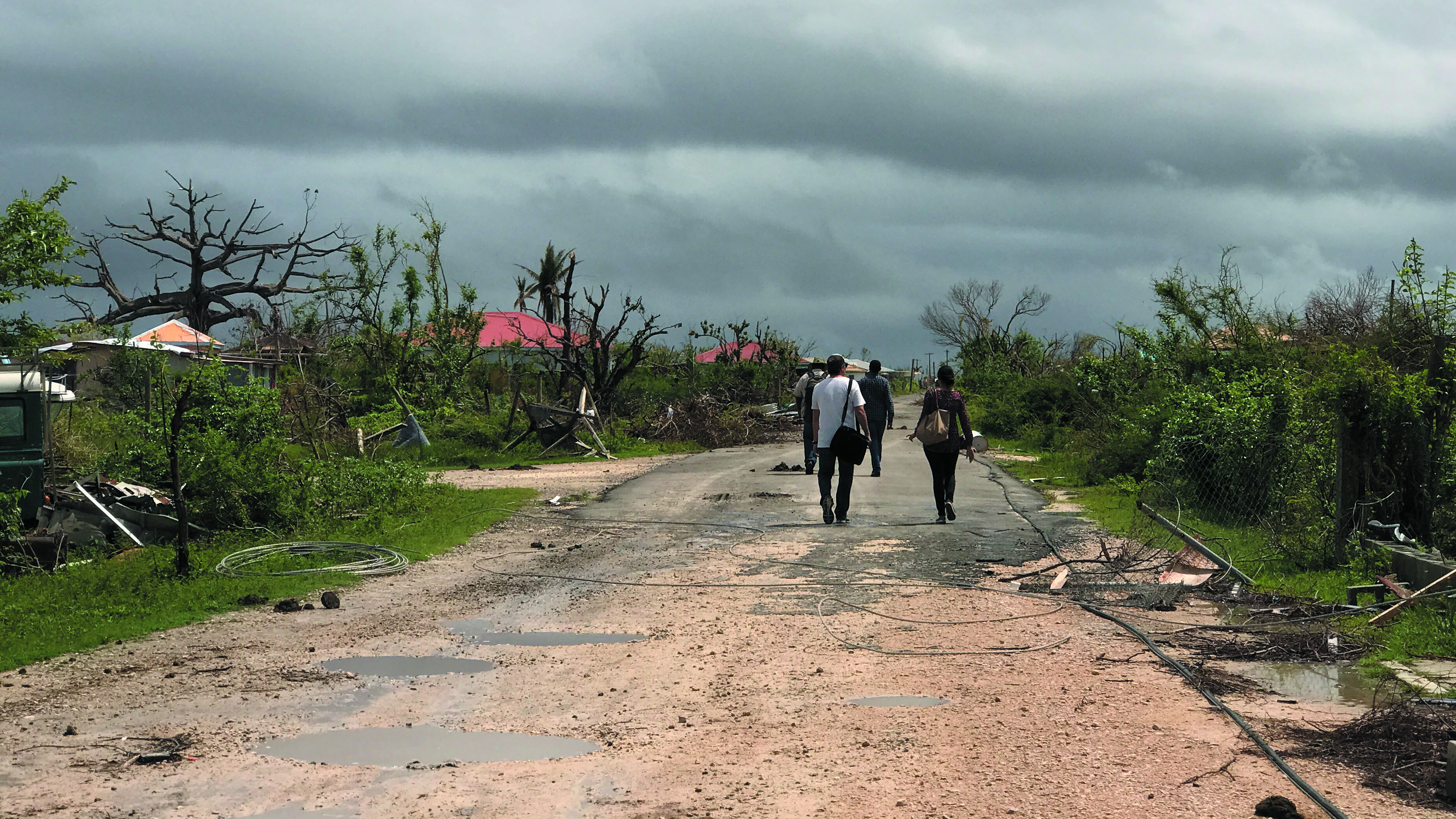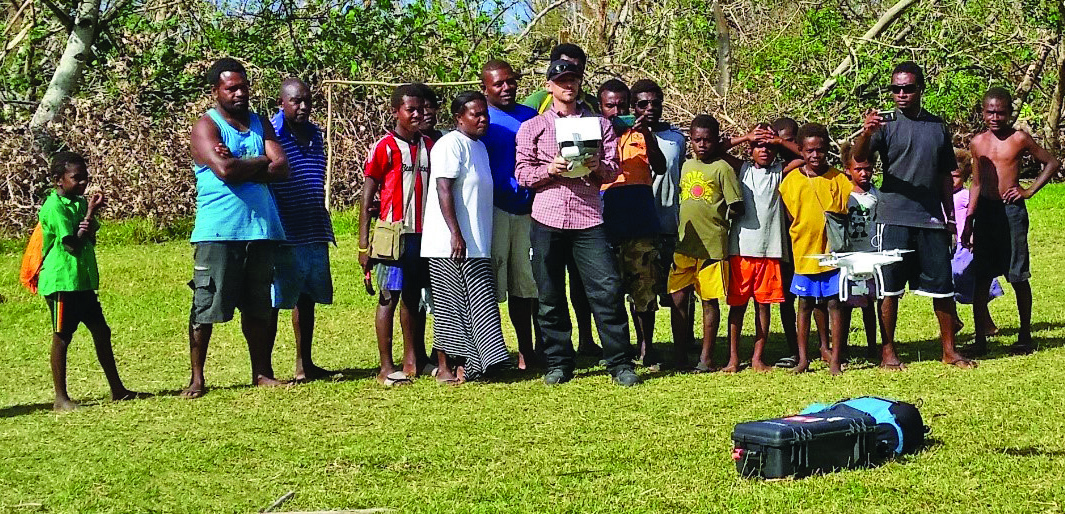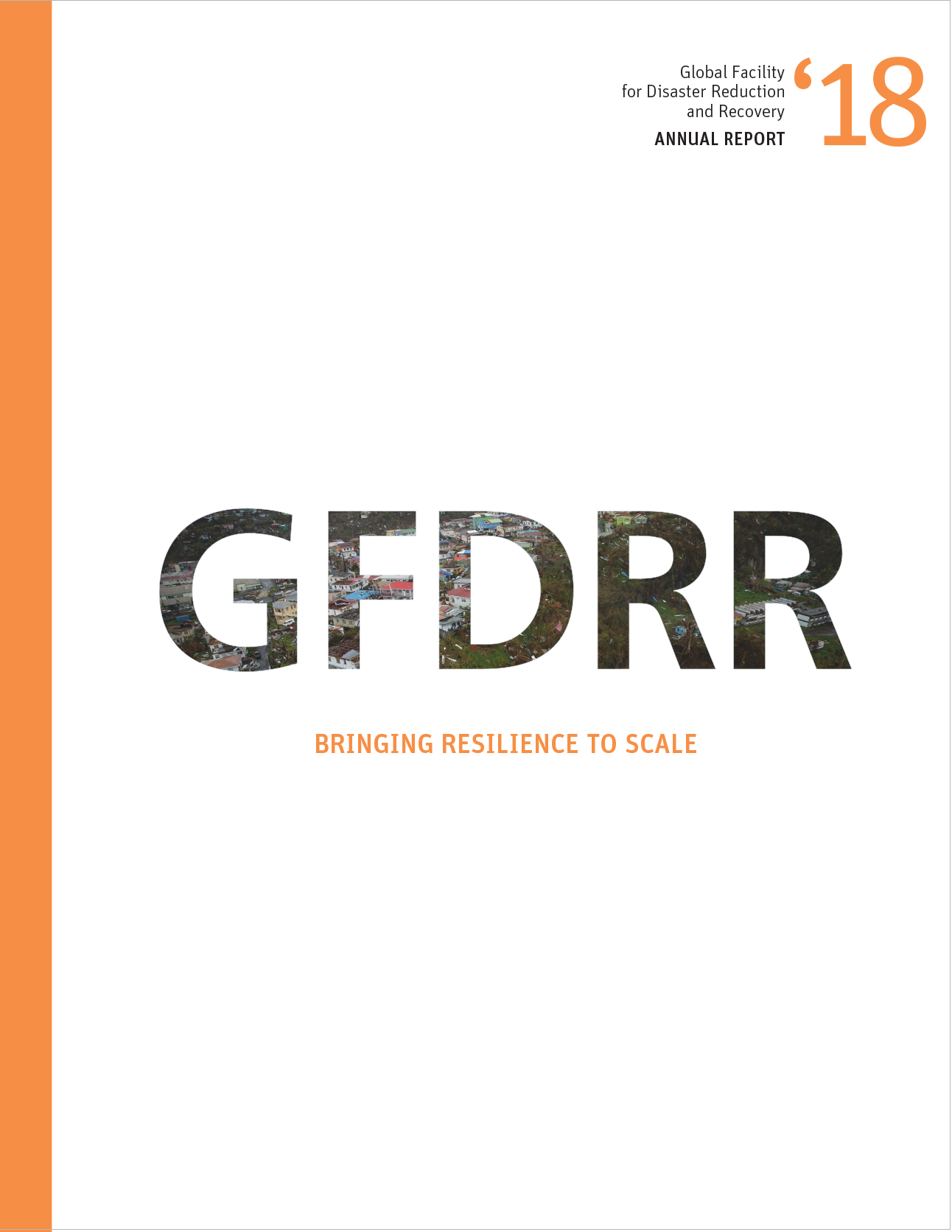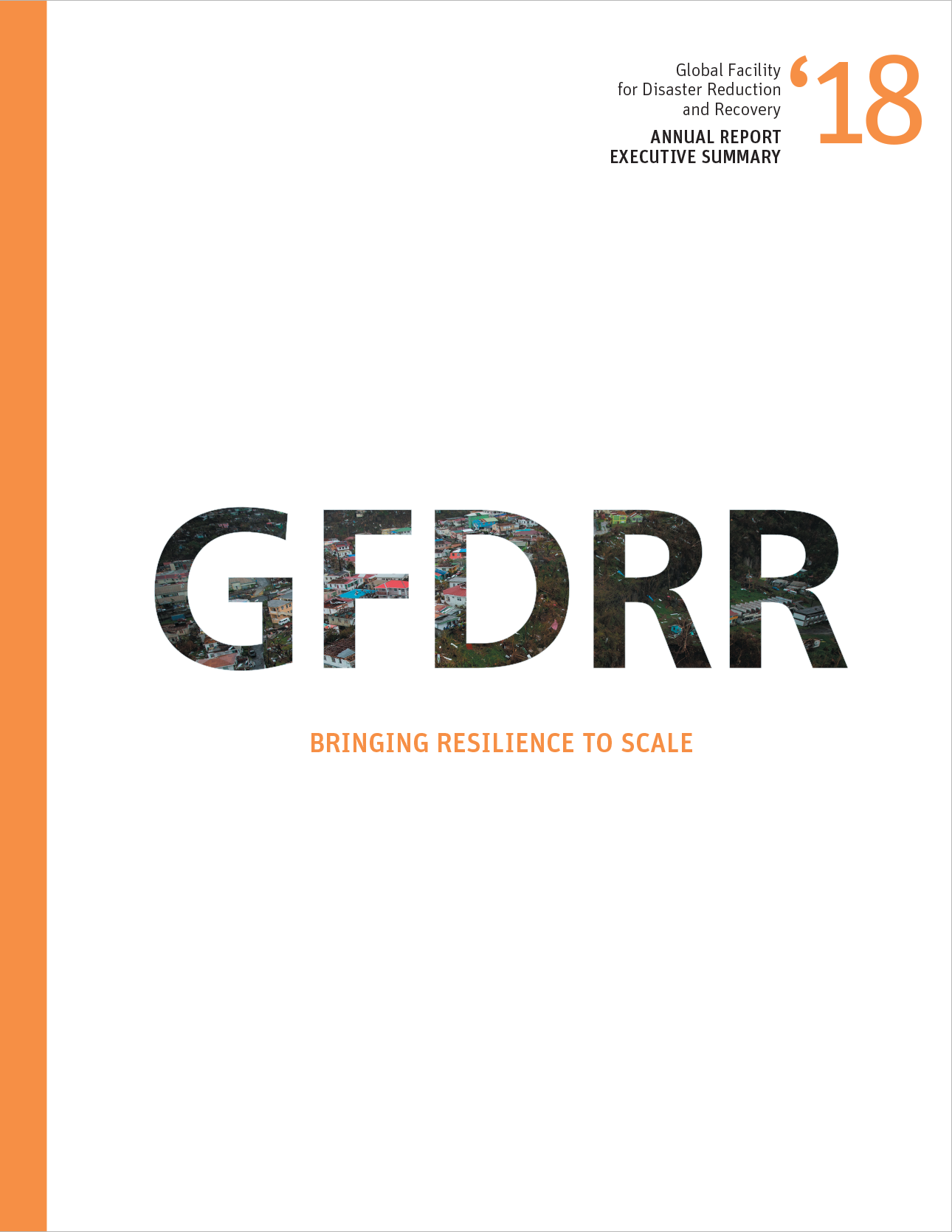The 2018 financial year was marked by disasters. Some, like the earthquakes in Mexico or the eruption of the Fuego volcano in Guatemala, were the result of unavoidable natural hazards. Others, such as the devastating flooding in South Asia or the droughts across the African continent, and the hurricanes and cyclones in the Caribbean and Pacific regions, were exacerbated by the impact of climate change or rapid urbanization, or a combination of the two.
The frequency and intensity of extreme weather events is increasing, as is the exposure of poor and vulnerable communities. These factors highlight the continued importance of investing in Disaster Risk Management (DRM) and building resilience. As this report reflects, the Global Facility for Disaster Reduction and Recovery (GFDRR) continues to grow its portfolio at 10 to 15 percent annually. In FY18, the GFDRR portfolio totaled $252 million, approximately 90 percent of which was dedicated to ex-ante DRM which includes risk identification, reduction, and preparedness, and reduces losses and damages from disasters.

A team surveys damages in the aftermath of Hurricane Jose in Antigua and Barbuda. (Photo by GFDRR).
Investing in preparedness is critical. But natural hazards will always be with us, and responding quickly reduces the overall costs; as a result, about 10 percent of GFDRR’s portfolio supports activities linked to post-disaster and resilient recovery interventions. As the recent Building Back Better report shows, annual losses in global well-being could be reduced from $555 billion to $382 billion, and lives and livelihoods are more likely to be saved, if countries build back stronger, faster, and more inclusively after a disaster. New technologies are disrupting the damage and loss landscape, allowing for faster assessments after events. At the same time, governments and communities are increasingly involved in recovery and resilience activities: around 40 percent of GFDRR’s active grants build social resilience with the participation of affected communities.
GFDRR continues to work with a range of partners in scaling up investments in disaster risk management in developing countries, in alignment with the Sendai Framework for Disaster Risk Reduction, and supporting the achievement of the Sustainable Development Goals (SDGs) and the Paris Agreement. FY18 marks the 10th anniversary of GFDRR, and the 10th anniversary of the tripartite agreement with the EU and the United Nations Development Program (UNDP) for post-disaster needs assessments (PDNAs). We commend GFDRR’s donors and secretariat for their achievements in the last decade, and look forward to seeing what we can do together to meet the challenges of the future.

Data generated from UAV images becomes the basis for analytical work to develop a better understanding of the interaction between communities and the local physical environment.
Much was achieved in the last fiscal year, and in the decade preceding it, but more is to be done. During this new financial year, communities around the world have already been affected by numerous disasters, and vulnerability and risks are increasing in many places. At the same time, disruptive technologies, from artificial intelligence to machine learning, are changing the landscape of solutions; private sector partners are increasingly sharing expertise and knowledge; and policy makers are recognizing that preparation and planning pay off. We are confident that GFDRR will meet the challenges going forward by drawing on a combination of strategic and technical expertise, innovation, commitment, and partnership to help countries and communities continue to bring disaster risk management and resilience to scale.


